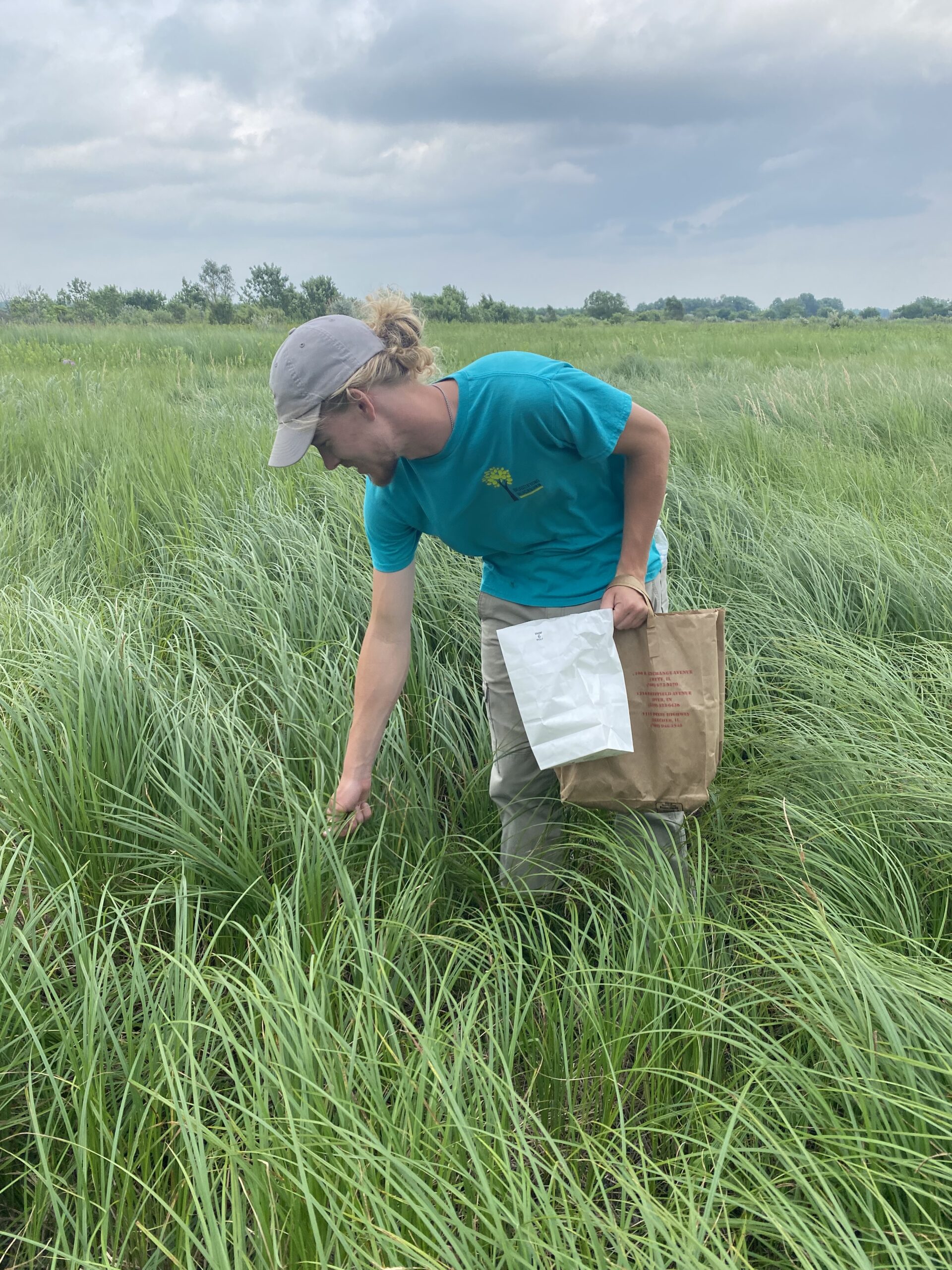Cannot believe I have already spent a month working at Midewin Prairie. I came in knowing how to identify literally only two tall grass prairie plants, now I walk around my community prairie and have fun pointing out all of the different plants that they have included! My dog is not as enthusiastic about the frequent stops in the sun to look at plants… but he gets over it quickly with a belly rub.
Here’s some highlights from the first month at Midewin:
Funny Puns
“How do you tell the difference between an alligator and a crocodile?” … “One you see later and the other in awhile” – Harsha Pandaraboyina
One of the best jokes I have heard in awhile, especially when it comes out of no where as you are marching to a site through tall grass and are concentrating very hard not to twist your ankle. Working with this group of guys is honestly one of the best parts of the job, they are all so knowledgeable about different things, are great jokesters in tiring situations, and let me be in charge. Plus they have great tastes in music so we can jam out while planting seeds or watering our thirsty plants (the Midwest is in a serious drought at the moment). I am looking forward to working with them for the next few months!
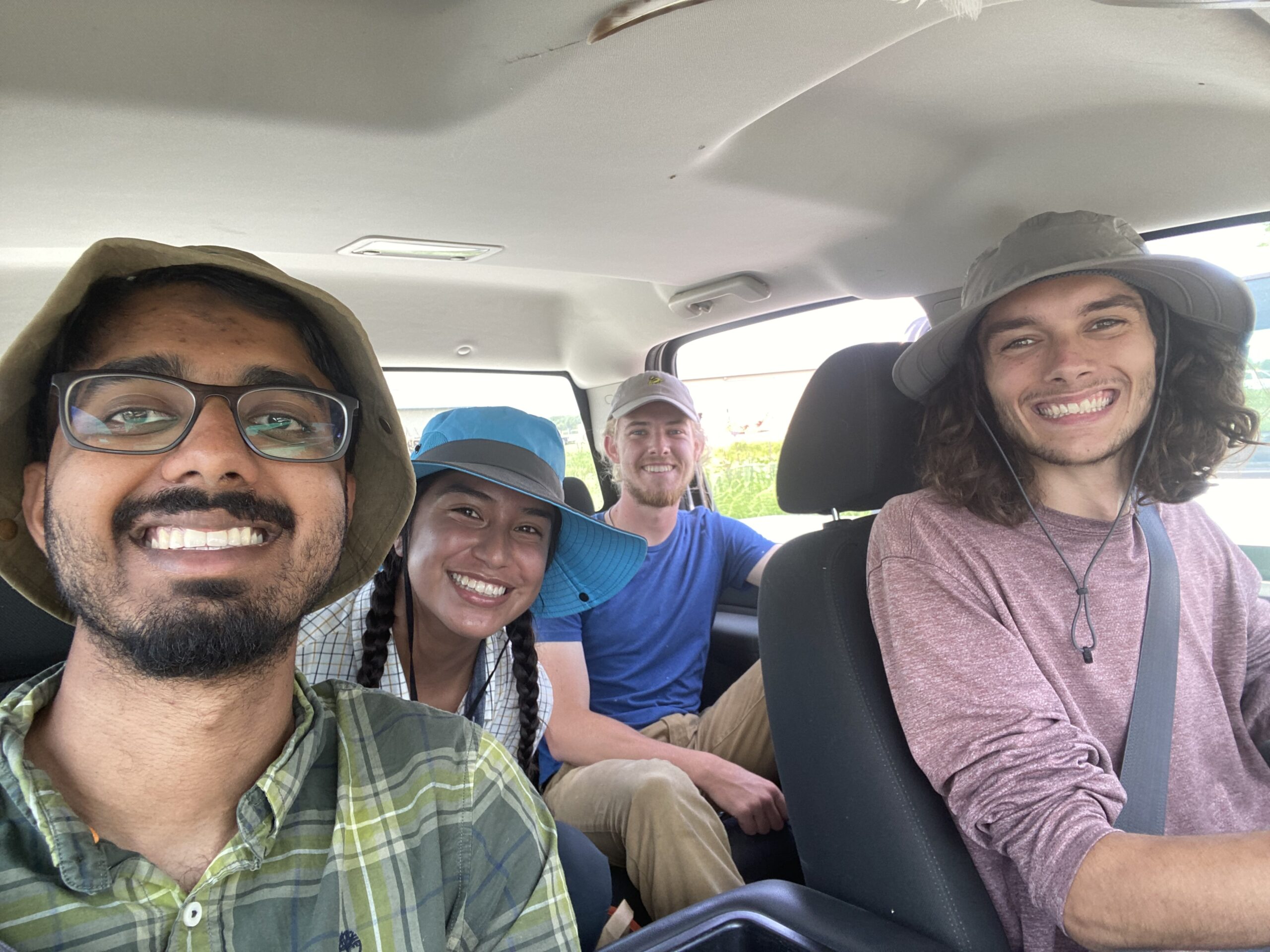
Seeds, Seeds, and More Seeds!
Wow have we been collecting and identifying a bunch of plants and their seeds! We have collected what we have but unfortunately we have been in a terrible drought here so our mentors say the seed might not be as viable this year as in years past. My favorite plants to identify thus far are Spiderwort, Penstemons, and Silphium because one of them (prairie dock plant) has a neat cooling system inside it so when you touch it one side is colder than the other! So now we all live to touch both sides when we see it.
Look we are Birders now!
Fun fact: 27 years ago researchers noticed an influx of native grassland bird species in the Midewin area(which at that time was a US army base). They realized that these tall/short grassland prairies were unique to the area that had become largely agriculture fields. So Midewin National Tall grass Prairie was established, for the birds! Makes sense as to why the biologists conduct at least three bird surveys year here.
June calls for the grassland bird survey at Midewin. We got to work with the wildlife biologist/technician and go out to different sites around the prairie to identify different birds based on visual and audio cues. Although we did not know much about birds in the beginning we quickly got good at identifying key species like the Dickcissel, Red-winged black bird, and Common Yellowthroat. Now whenever we go out into the field I am quick to point out some of the birds in the area. Which I know Nathan secretly appreciates being the plant guy that he is. Harsha had a ton of fun with the binoculars too! Needless to say, we are now birders as well as botanists in training at Midewin.
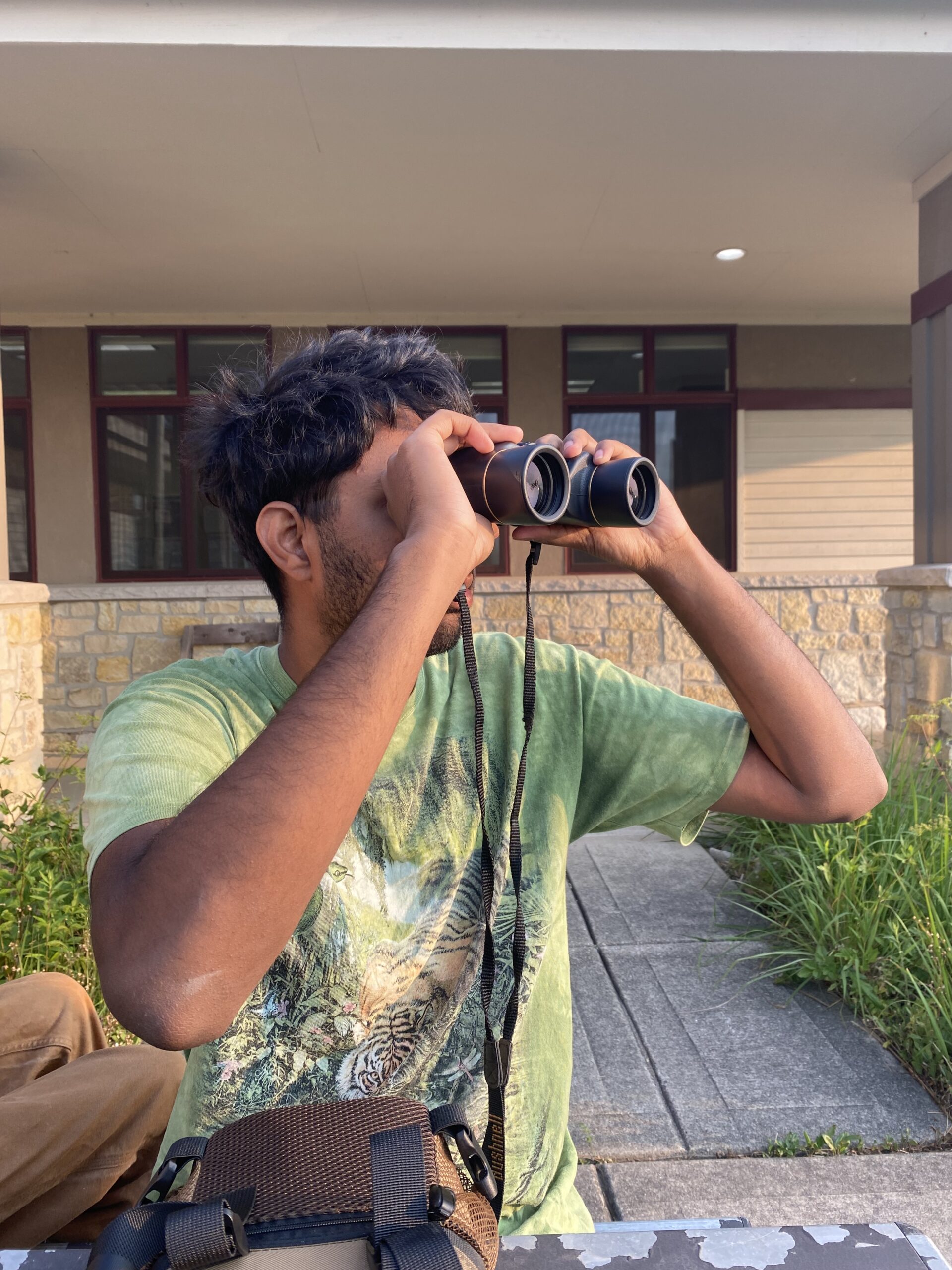
The Pollinators to our Orchids
Platanthera praeclara is a rare, threatened orchid found at Midewin that has been monitored and hand pollinated for a few years through a program with USFS and US Fish and Wildlife. The interns were able to go out with our botany specialist and a few technicians to learn how to hand pollinate and visually observe the orchid in the field so that we can help with the orchid survey that started in late June. So we learned how to take the pollinia from one orchid and hand pollinate it to another orchid in order to keep the populations consistent in numbers at Midewin. Sadly, because of the drought here the population numbers are lower than normal years, but we did find enough orchids to be successful in pollinating. Hopefully at least a few set seed so they can repopulate in the coming years.
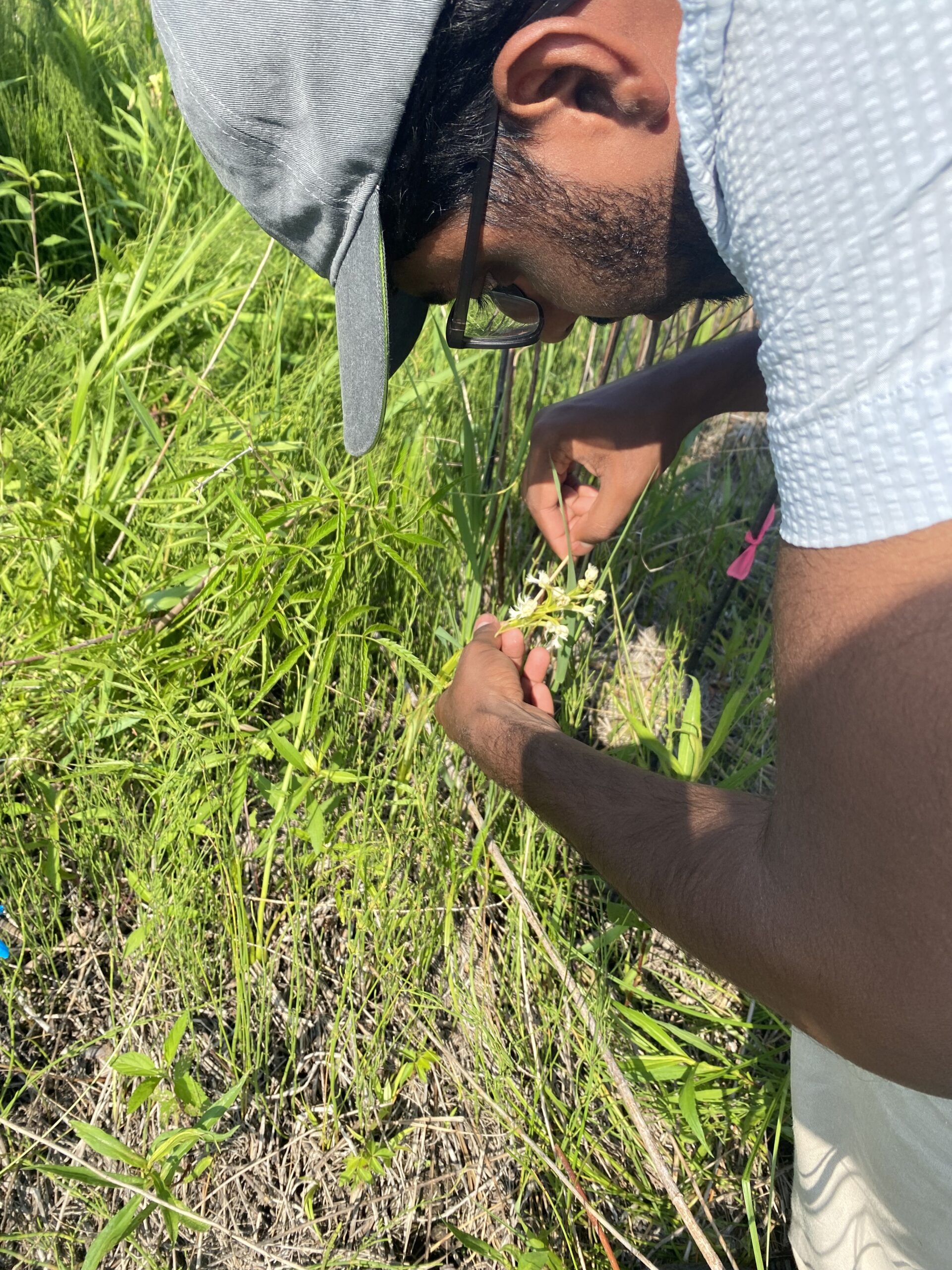
Whatever you do, DON’T DRINK THE WATER!
We got to work with the hydrologic technician and conduct water quality surveys around the prairie which means waders! We got to learn about the role that he plays in the health of the wildlife and prairie, what he wants to do in the future, and the equipment he uses to learn more about the water quality. We took readings with the YSI probe, gathered samples for nutrient composition, looked at the depth of the stream, and sampled for E.coli. Yes that’s right E.coli in the streams. We looked at six different streams around Midewin, some were beautifully clear with fish and crawdads swimming around, some were a little more sandy and harder to see but all were full of E.coli… Long story short, we look amazing in waders, but don’t drink the water!
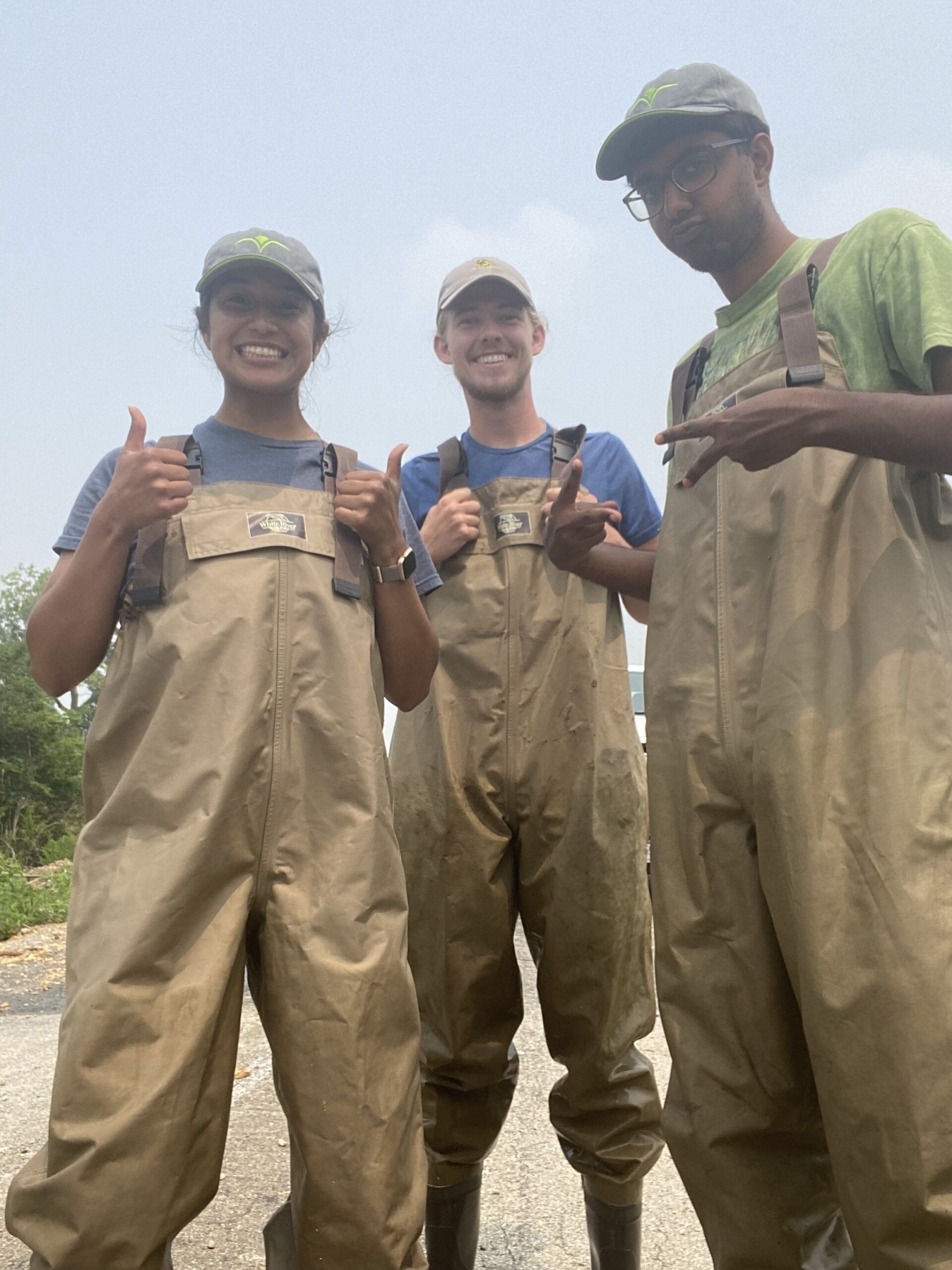
Carex…. Still working on it…
“Sedges have edges, Rushes are round, and Grasses have nodes from the top to the ground”
Exactly what goes through my mind when we have to identify and collect Cyperaceae (Sedges) out in the field. Luckily our mentors have given us a guide to all of the Carex species found at Midewin, but it doesn’t stop the identification process from being very stressful and long. We have started collecting Carex out in the field and wow there are a lot of them to identify in our more wetland habitats. Thankfully our techs and mentors are more than willing to help us identify the sites and species we are looking for. hopefully with time and effort we will be just as good at identifying as they are!
